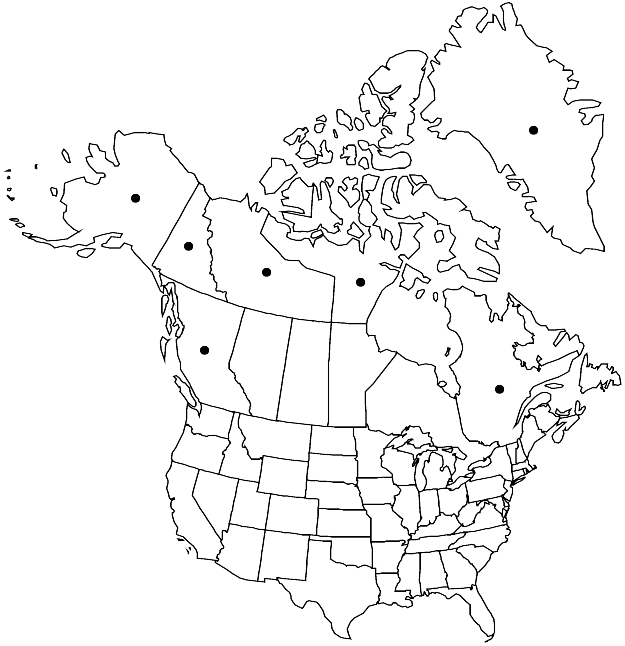Orthothecium intricatum
in P. Bruch and W. P. Schimper, Bryol. Europ. 5: 108. 1851.
Plants small, in mats or tufts, green to yellow-green. Stems 4 cm, 0.2–0.3 mm wide, curved-ascending, sometimes creeping, irregularly branched. Leaves erect to erect-spreading, homomallous, narrowly lanceolate, not or faintly striolate, 1–1.8 mm; margins plane to somewhat revolute, entire or somewhat sinuate; apex gradually subulate; ecostate or costa double, very short; basal laminal cells shorter, broader than medial cells, yellow; medial cells elongate, linear, 45–75 × 4–6 µm. Specialized asexual reproduction rare, by propagula in leaf-axils, short, filamentous. Seta redbrown. Capsule symmetric, 1.5–2 mm. Spores 10–14 µm.
Habitat: Moist shaded calcareous soil, granite, schist, limestone, rock ledges, vertical cliff faces, tundra
Elevation: moderate elevations (200-1500 m)
Distribution

Greenland, B.C., N.W.T., Nunavut, Que., Yukon, Alaska, n Europe, Asia (China), Asia (Japan)
Discussion
Orthothecium intricatum is distinguished by leaves that are homomallous and narrowly lanceolate, with plane to slightly revolute margins. The stems are yellow-brown; the leaves are occasionally twisted-flexuose when dry; and the setae are 1.5–2 cm. Sporophytes are rare, and a station in Ontario is doubtful.
Selected References
None.